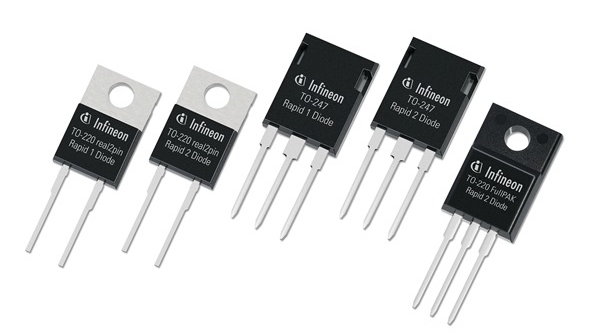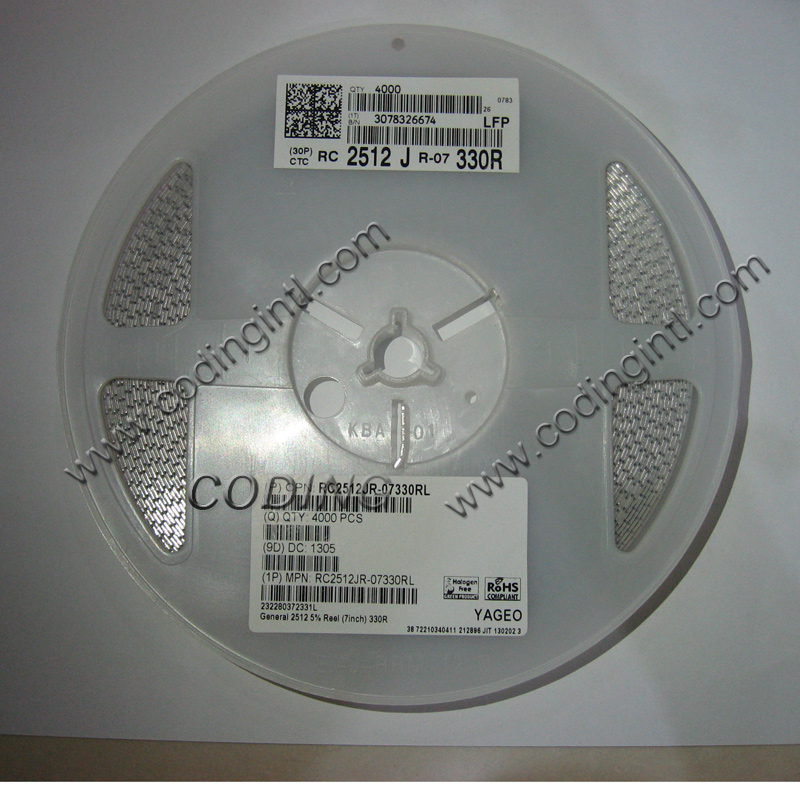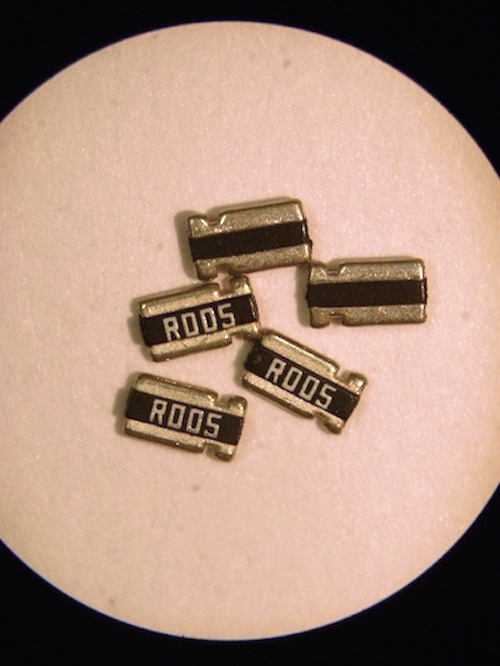High-Voltage TMBS Diodes Challenge Planar Schottkys
Trench MOS barrier Schottky diodes combine low VF and high-speed switching with improved protection from voltage transients, enabling the benefits of conventional planar Schottkys in 100-V and 120-V applications.
Schottky rectifiers are the preferred choice for high-frequency applications and for when low forward-conduction energy losses are critical, thanks respectively to their high switching speed and low forward (on-state) voltage drop. Until recently, silicon-based Schottky barrier rectifiers were limited to operating voltages below 100V for most applications. However, with the rapid increase in power consumption in several consumer electronics applications, Schottky rectifiers with higher reverse-bias voltages (100V and above) have become a mainstream choice for higher-output adapters.
A similar development has occurred in the design of high-power, high-efficiency telecom base station power supplies. Higher voltage spikes and/or higher switching frequencies are the inevitable outcome of this trend. Consequently, Schottky rectifier product developments are moving toward higher operating voltage ranges. To meet the requirements of these applications, 100-V Schottky rectifiers have become more common, with new designs moving toward reverse-bias voltage ratings of 120V, 150V and even 200V.
As higher operating voltages have become more common, the performance limitations of Schottky devices have become more obvious. Conventional Schottky designs use a planar structure similar to that shown in Fig. 1.
For planar structures to achieve breakdown voltages of 100 V and above with an acceptable reverse leakage current, it is standard practice to use a carefully designed P-type guard-ring structure, a high-resistivity silicon epitaxial layer and a high Schottky barrier height. In this structure, the P-type guard ring injects minority carriers into the semiconductor drift region. However, these carriers slow down the Schottky rectifiers under switching conditions.
The high-resistivity silicon and high Schottky-barrier height all contribute to increased on-state voltage drop (and, to a lesser degree, to slower switching speeds). As the operating voltage moves to 100 V and above, planar Schottky rectifiers tend to lose their advantage of high switching speed and low forward-voltage drop to a substantial degree. These limitations can be alleviated by using the trench MOS barrier Schottky (TMBS) rectifier from Vishay.
A new series of 100-V rectifiers apply a proprietary TMBS structure to address the previously mentioned weaknesses of the traditional planar Schottky rectifier. The multicell structure of the device is illustrated in Fig. 2. The parameters that affect TMBS performance include the trench depth, mesa width, trench-oxide thickness, doping of the epitaxial layer, and electric-field termination. These parameters are related to oxide stress, charge coupling, optimized forward voltage drop (VF) and reverse current (IR).
When the TMBS device is in reverse bias, the MOS will couple the charge along its sidewall, causing a depletion region, also shown in Fig. 2. The depletion regions of two adjacent MOS transistors will overlap as the reverse bias increases, resulting in pinch-off (an overlapped depletion region). The Schottky diode’s interface leakage current (IR) is reduced by this pinch-off electric field.
The depletion regions that result from the trench MOS barrier structure diminish minority carrier injections to the drift region; hence, the stored charges are minimized under switching conditions. The switching speed is much improved, especially under high working temperatures and high conduction current conditions.
The trench MOS structure also provides charge-coupling effects in the drift region. As depicted in Fig. 3, the charge-coupling effect of the TMBS structure will change the shape of the electric field distribution from linear to nonlinear, where the same reverse breakdown voltages — the integration of electric field along the distance of drift region — will be obtained even with much lower resistivity silicon, as indicated by the sharp gradient of TMBS electric-field curve.
The TMBS structure successfully alters the electric field distribution to move the stronger electric field away from the Schottky metal-silicon interface to the silicon bulk. As indicated in Fig. 3, the depth of the surface electric field of the TMBS device is much lower than the planar Schottky devices. The reduced surface field will suppress the barrier-lowering effect, which significantly reduces the leakage current for a given Schottky barrier height. This allows lower Schottky barrier heights to be used without sacrificing reverse-leakage performance, which in turn results in a lower forward-bias on-state voltage drop.
TMBS Verus Planar Schottky Devices
Fig. 4 compares the forward current/voltage characteristics of TMBS and conventional planar Schottky rectifiers with the same chip sizes and barrier heights. Even when compared with conventional 60-A rectifiers, a 40-A, 100-V TMBS device shows improved forward-voltage-drop performance. The switching performance of the TMBS is also better, as shown in Fig. 5.
To compare the new TMBS rectifiers with conventional planar Schottky rectifiers in an actual application, a series of experiments were performed in which TMBS rectifiers were tested against benchmark Schottky rectifier products built with planar technology. In the first test, a 350-W switch-mode power supply (SMPS) was used as a test vehicle. TMBS devices rated at 40 A and 100 V were compared to industry-standard Schottky rectifiers rated at 20 A and 100 V (MxxxxH100CT), and two such devices with ratings of 60 A and 100 V (XXCTQ100 and STxxxxH100CT). All devices in this evaluation are packaged in the standard TO-220.
From the results illustrated in Table 1, we find that at a 67% output (about 235 W) to full-rated power levels, the 20-A rated device has the lowest total power-supply efficiency of 78.3%. When the 60-A rated devices were substituted for the 20-A devices in the same power-supply slot, efficiency improvements of 0.8% and 0.9% were observed. These improvements translate into a savings for the power supply of 2.35 W and 2.77 W, respectively. Even when the 40-A TMBS rectifier is used to replace a traditional planar device rated at 60 A, the improvement in efficiency is still positive at 0.4%. Compared to a baseline 20-A planar Schottky rectifier, the efficiency improvement is 1.3%, for a power savings of 3.72 W.
To further demonstrate the capabilities of the new TMBS devices, we evaluated TMBS rectifiers with ratings of 40 A and 100 V (VTS40100CT) in a 120-W adapter. The typical solution for this application is a synchronous rectification approach implemented with two 40-A, 100-V MOSFETs and a matching driver IC. From test data as described in Table 2, and under full-rated 120-W output conditions, the pair of TMBS rectifiers provide the same total adapter efficiency of 87% as the more complicated, more costly and less robust synchronous rectification solution.
Another advantage of the TMBS structure over the conventional planar Schottky structure is its capability to withstand higher energy transients during reverse bias. The strongest electric field of a conventional planar Schottky rectifier is at the surface of the device, which will limit heat dissipation and avalanche energy absorption. The strongest electrical field of a TMBS device, by contrast, distributes at the bottom of each trench well. The silicon bulk can thus absorb and dissipate more avalanche energy than the surface, thus providing the TMBS structure increased protection against reverse-bias transients.
This ability to endure high reverse-avalanche energy makes the TMBS rectifier more suitable for use in high ESD or rectification applications such as ORing diodes in hot-plug systems and diodes in SMPS. The average of 8 µs × 20 µs reverse-surge energy of the 40-A, 100-V VTS40100CT is about 170 mJ. This is about twice the conventional planar Schottky diode’s reverse-surge energy under the same test condition.
The junction capacitance (CJ) of a TMBS device is much higher than that of planar Schottky diodes at a small reverse bias. This high capacitance is caused by the trench sidewall and bottom capacitance being in parallel with the original Schottky barrier capacitance. When reverse bias increases, however, the TMBS capacitance falls significantly. Depletion regions will completely overlap when reverse-bias voltage is high enough.
The TMBS electrical field distribution is close to that of a planar Schottky diode. Fig. 6 shows the capacitance of Vishay TMBS and a planar Schottky having the same chip size. The value for CJ of the 100-V TMBS is moderately larger than that of the planar Schottky rectifier for reverse-bias voltages over 30 V. However, since TMBS technology has a higher current density, a smaller chip with lower capacitance may be used to offset this difference in a given application.
Extensive benchmark and application tests have been done so far for TMBS products with a 100-V reverse-bias voltage. However, 120-V products have been developed and released for applications that see higher voltage spikes and where a 100-V rated product might provide inadequate headroom to ensure long-term reliability. These 120-V products offer current ratings from 15 A to 60 A, and are offered in the ITO-220, TO-220, TO-262, TO-263 and TO-247 packages.
The next step for TMBS rectifiers will be 200-V devices, which are now under development. Preliminary test results as described in Table 3 have been very encouraging, showing that the TMBS rectifier provides lowest on-state voltage drop compared to the industry’s benchmark 200-V planar Schottky rectifiers and 200-V ultrafast p-n junction diodes. The comparison underscores the switching performance advantages of the TMBS rectifier.
In addition to a stored charge that is only about half the values of the industry’s benchmark devices, peak switching reverse recovery current (IRR) is 34% lower by comparison. This low IRR will contribute to the lower switching losses of the transistor switches and improve the power conversion efficiency of the complete circuit, particularly in designs with switching frequencies above 300 kHz. The 200-V rated TMBS rectifier is slated for release in the third quarter of 2006.
Applications
As shown in the performance comparisons in Table 1, SMPS achieve higher efficiency operation by using TMBS instead of conventional planar Schottky rectifiers, due to the lower forward-voltage drop and faster switching speed of the TMBS. The performance comparisons in Table 2 also show that TMBS achieves the same efficiency as a MOSFET synchronous rectifier in a 120-W adapter application, but at a lower cost.
Synchronous rectification circuits have used low on-resistance MOSFETs instead of planar Schottky rectifiers due to their higher efficiency and better thermal performance. However, as we have shown, TMBS is a cost-effective alternative to MOSFET synchronous rectifiers. Furthermore, TMBS offers the advantage of providing better performance in low output current devices such as adapters and open-frame power supplies. Synchronous MOSFET rectifiers may indeed provide good performance in high current rectification applications, but the percentage of total power loss contributed by switching losses from MOSFETs used for output rectification increases in low current applications.
Also, the MOSFET circuits generally require complex control circuitry, with the effect of creating additional failure risks that can reduce the reliability of power-supply systems. Therefore, low VF TMBS rectifiers are more suitable for lower current adapters and open-frame power-supply designs. The performance of TMBS can compete with that of MOSFETs in lower-current rectification applications, and enjoys the advantages of shortened design cycles and lower production costs by requiring no additional control circuits.
In high-reliability power systems, redundant power supplies share electrical loads and protect the system in case of any shutdown resulting from malfunctions in one of the power supplies. The design aims to isolate the failed SMPS from the common bus if an SMPS failure occurs, and thus requires a switch to isolate the failed SMPS. This switch must be highly sensitive and able to react with high interrupt speed when an SMPS fails; but it must also have low conductivity for big transient loads.
TMBS diodes offer significant improvements over conventional diodes for ORing functions in isolated redundant power supplies. Low RDSON MOSFETs (ORing FETs) are sometimes used in these applications. However, ORing FETs have a lower switching speed than ORing diodes, which may cause undesirable 0.8-V to 1.5-V voltage drops by the body diode of the ORing FET after it is tripped by high-transient voltage changes from high loading to low loading. The more reliable redundant power-system design is to use one ORing FET in parallel with one low VF Schottky diode. The 100-V TMBS Schottky diode offers a good design solution in telecom redundant power systems.
Another advantage of the TMBS diodes over conventional Schottky diodes is their higher reverse-energy capability to better withstand transients when power supplies switch on. The unique trench well structure and silicon bulk in the TMBS absorb and dissipate more avalanche energy than the plain interface structure of conventional planar Schottky rectifiers. The average 8-µs × 20-us reverse-surge energy of the VTS40100CT is about 170 mJ, which is about two times that of conventional planar Schottky diodes under the same testing conditions. This ability to enable higher reverse avalanche energy makes the TMBS more suitable for use in high ESD or rectification applications than the diodes used for ORing in hot-plug systems and rectification in SMPS.
Established in 2004, Coding International Co., Ltd (shenzhen Coding Technology Co.,Ltd) is a gather the development, production, marketing combine together of the semi-conductor professional company. We can provide a wide range of capabilities in research and production such as all kinds of Diode, Triode transistor, Audions, Triac, Dynatrons, Thyristor, LED product, Optocoupler, Silicone Bridge, IGBT power Module and Surge arrester, ICs, ect.
This article by blogcoding original compilation, please indicate the source:http://www.codingintl.com/blog/1036.html


![[Thick Film Chip Resistor] Low-Profile, High Power Resistors Use Thick-Film Technology [Thick Film Chip Resistor] Low-Profile, High Power Resistors Use Thick-Film Technology](http://www.codingintl.com/blog/wp-content/uploads/2014/10/Thick-Film-Chip-Resistor.jpg)


Post a comment